If you receive a Stop Error on Windows 11/10 with an error message – INTERNAL_POWER_ERROR with a bug check code 0x000000A0, it indicates that the power policy manager experienced a fatal error. This can happen because of the size of the Hibernate file. This guide will help you to resolve this Blue Screen error on Windows 11/10.
The parameters that accompany the error message provide the following information:
- Parameter 1 is always equal to 0x0000000B.
- Parameter 2 is equal to the size of the hibernation file in bytes.
- Parameter 3 is equal to the number of bytes of data that remain to compress and write to the hibernation file.
- Parameter 4 is unused for this error.
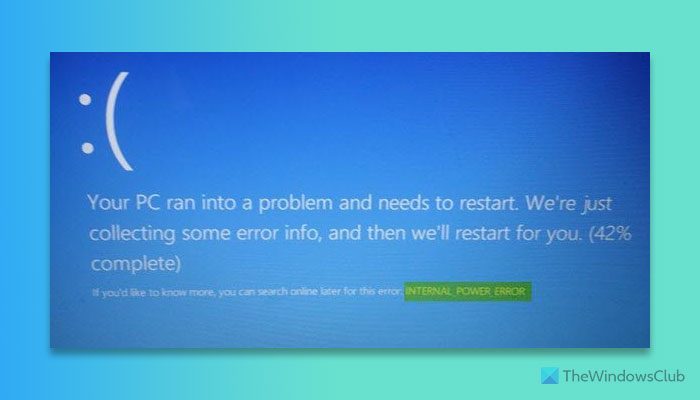
Fix INTERNAL POWER ERROR BSOD on Windows 11/10
Increasing the size of the hyberfil.sys (Hibernate) file will most likely help you resolve the issue, but we are, nevertheless, listing the solutions that could potentially help you:
- Update your drivers
- Check Device performance and health
- Run ChkDsk
- Increase the size of the Hibernation file
- Run Troubleshooters
- Run Windows Defender Offline
- Uninstall recently installed Software
- Disconnect external hardware and USBs.
1] Update your drivers
Check with Windows Update, and see if an update is pending that relates to your Device Drivers. If necessary, you can always install them manually from the OEMs website.
To update drivers in Windows 11, you need to open the Windows Settings panel first. Then, go to Windows Update > Advanced options > Optional updates.
Here you can find a section called Driver updates. You need to expand this section.
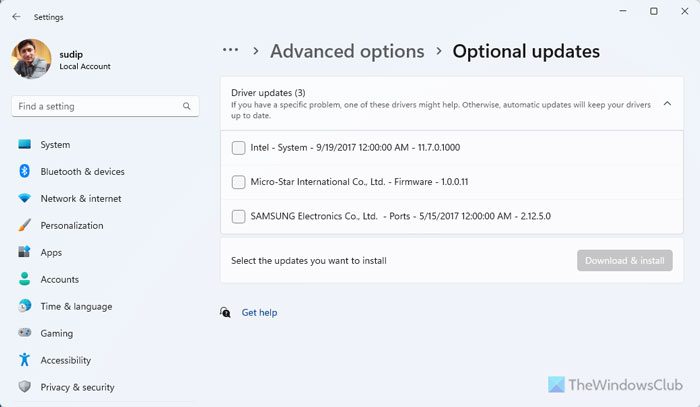
It displays all the available and pending updates that you can install. You need to tick the corresponding checkboxes and click the Download & install button.
2] Check Device performance and health
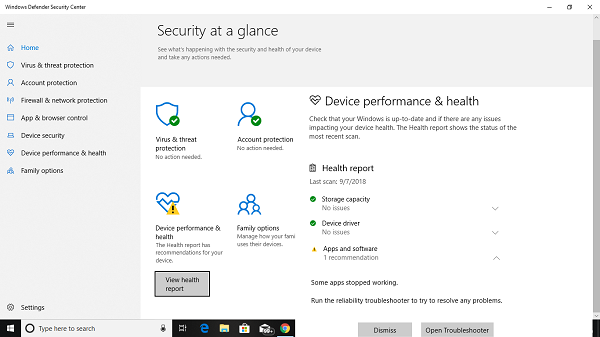
Open Windows Defender Security Center, and check if there is a yellow explanation icon against Device performance and health. Click on View Report. You might see Health Report pointing towards Storage Capacity, Device Drivers, or Apps and Software.
3] Run ChkDsk
If the error is related to Storage, i.e. hard disk errors, you need to repair it. You should run chkdsk in the command prompt to resolve those issues.
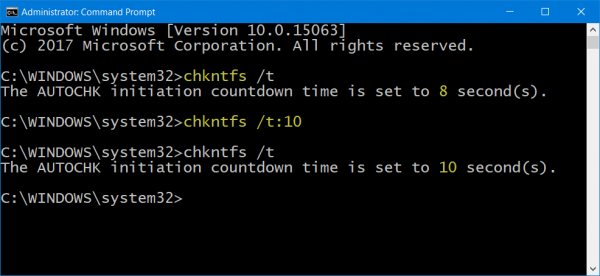
If this cannot solve your problem, you may have to think about replacing your hard drive. When you do so, back up all your data on the Windows 11/10 PC. You can also use it as a secondary hard drive.
4] Increase the size of the Hibernation file
Open Command Prompt as administrator and execute the following command:
powercfg /hibernate /size 100
The default size is 40% in Windows 11/10, and after running this command, it will be increased to 100%
This will most likely help you. If not you may reverse this.
5] Run Troubleshooters
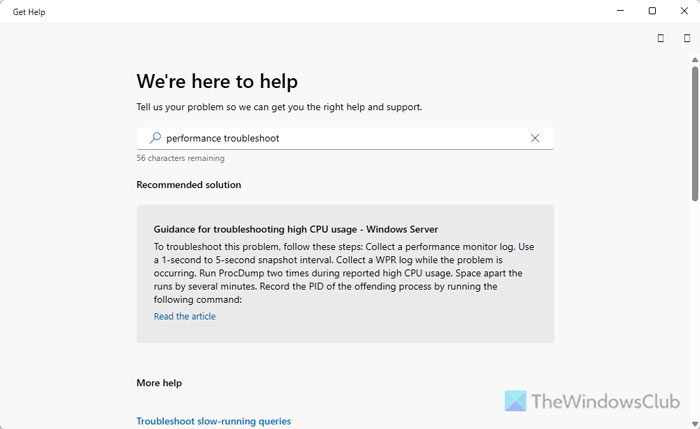
Run the following command to open the Performance Troubleshooter:
msdt.exe /id PerformanceDiagnostic
Once it is opened, run it.
Run the following command to open the System Maintenance Troubleshooter:
msdt.exe /id MaintenanceDiagnostic
Once it is opened, run it.
If you use Windows 11, you cannot use those methods. Instead, you need to use the Get Help app. Open the Get Help app, search for those Troubleshooters, and run them accordingly.
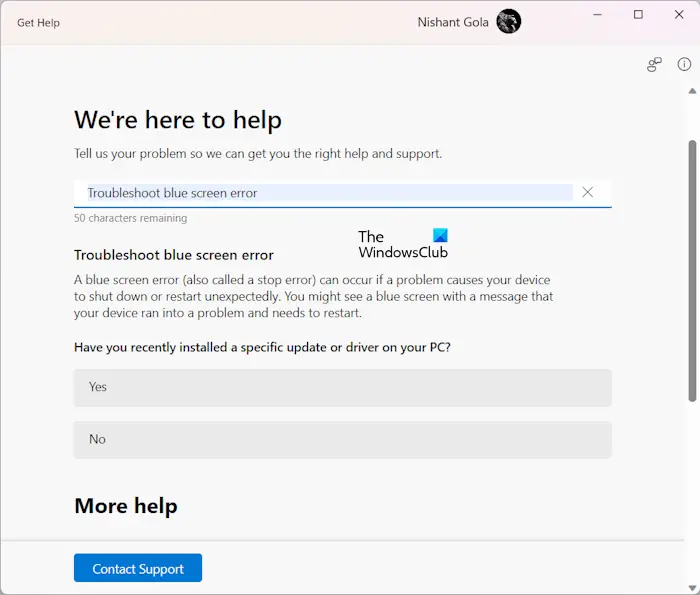
You may also run the Blue Screen Troubleshooter. The built-in Troubleshooter in the Get Help app is easy to run and helps you fix BSODs. The online Windows 11/10 Blue Screen Troubleshooter from Microsoft is a wizard meant to help novice users fix their Stop Errors. It offers helpful links along the way.
6] Run Windows Defender Offline
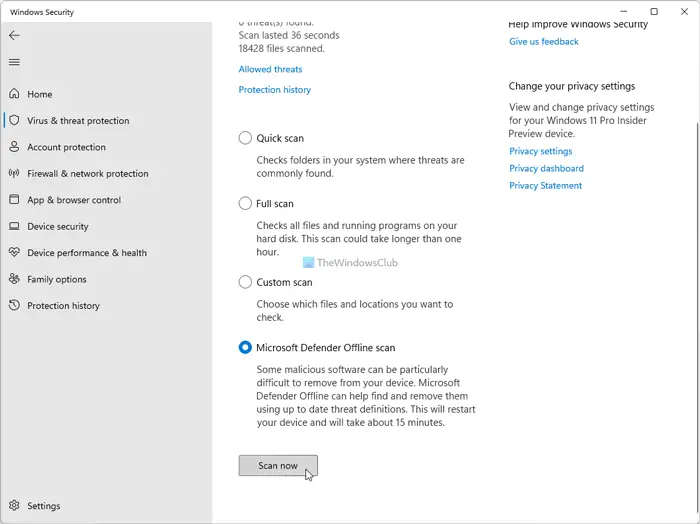
You can scan your PC offline using Windows Defender to find out if any malware has affected your PC.
7] Uninstall recently installed Software
If this problem occurs after installing new software, you need to install it. Open Settings > System > Apps & features. Select Sort by name and change it to by install date. Change it to the recently installed app you want to remove, and then select Uninstall.
8] Disconnect external hardware and USBs
Make sure to remove any connected & external hardware when upgrading or updating. Many a time Windows update gets stuck because it tries to get a driver for the connected hardware which can be done later.
All the best!
Read: Fix DRIVER IRQL NOT LESS OR EQUAL (USBXHCI.sys) BSOD
How to fix Blue Screen INTERNAL_POWER_ERROR?
To fix the INTERNAL_POWER_ERROR BSOD in Windows 11/10, you should first update the drivers, as it mainly happens because of corrupt drivers. Then, you can use the Windows Memory Diagnostic to check if your RAM is fine or not. The same thing can be done with a hard disk using ChkDsk.
How to fix Blue screen error in Windows 11?
The easiest way to fix any blue screen error in Windows 11 is by using the Get Help app. Whenever you encounter a BSOD, you should opt for an application that solves almost all common problems within a moment. On the other hand, you should also look at the entire error message on the BSOD screen to recognize the problem quickly.